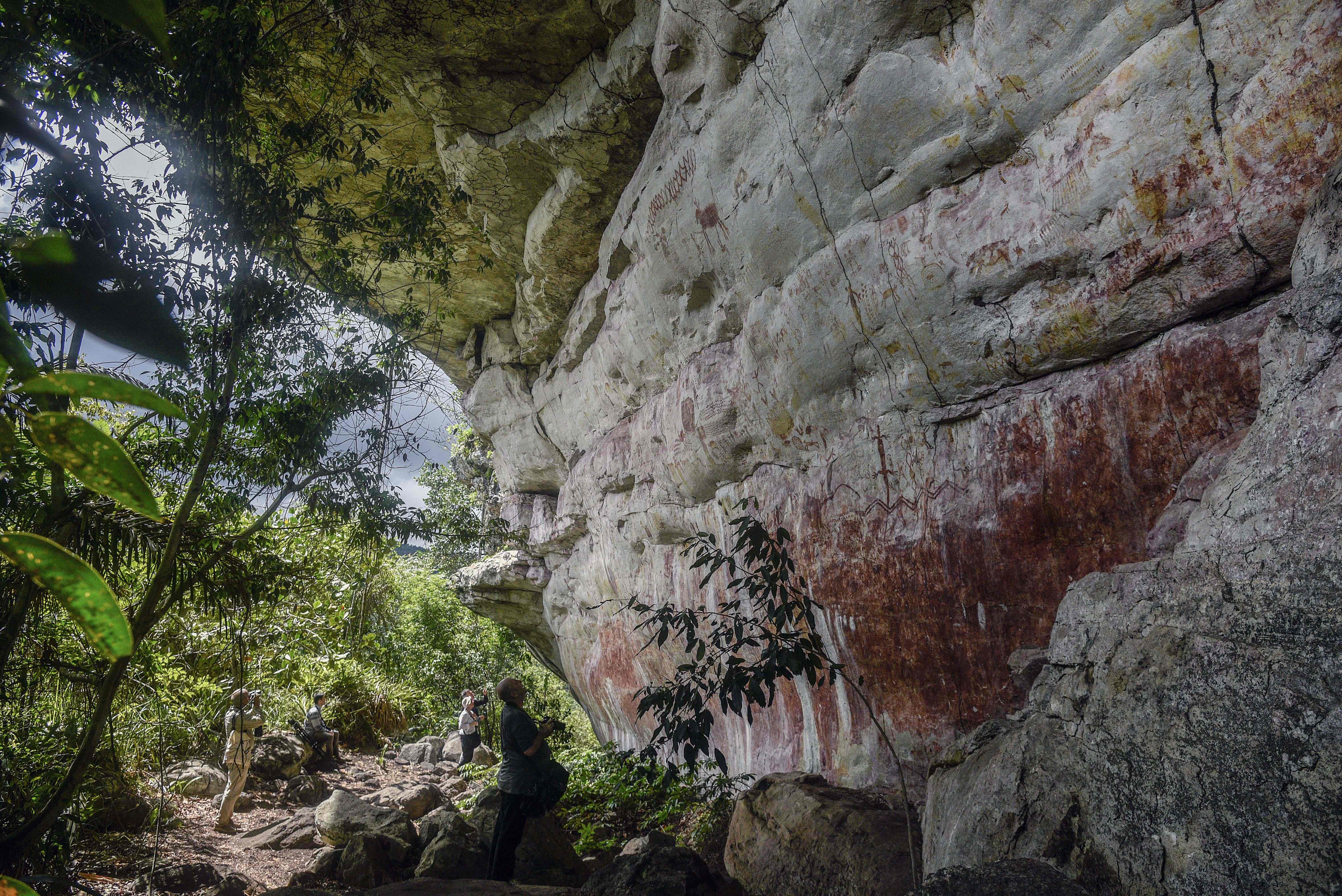Prehistoric rock art discovered in Colombia hailed as ‘Sistine Chapel of the ancients’
Experts have dated the rock art based on portrayal of animals that are now extinct

Your support helps us to tell the story
From reproductive rights to climate change to Big Tech, The Independent is on the ground when the story is developing. Whether it's investigating the financials of Elon Musk's pro-Trump PAC or producing our latest documentary, 'The A Word', which shines a light on the American women fighting for reproductive rights, we know how important it is to parse out the facts from the messaging.
At such a critical moment in US history, we need reporters on the ground. Your donation allows us to keep sending journalists to speak to both sides of the story.
The Independent is trusted by Americans across the entire political spectrum. And unlike many other quality news outlets, we choose not to lock Americans out of our reporting and analysis with paywalls. We believe quality journalism should be available to everyone, paid for by those who can afford it.
Your support makes all the difference.An eight-mile wall of prehistoric rock art featuring animals and humans has been discovered in the Chiribiquete National Park, Colombia, in the Amazon rainforest.
Dubbed the “Sistine Chapel of the ancients”, the 12,500-years-old artwork was uncovered by a British-Colombian team of archaeologists under the leadership of José Iriarte, professor of archaeology at Exeter University, and was funded by the European Research Council.
Experts have dated the rock art based on the portrayal of animals that are now extinct, such as a mastodon — a prehistoric relative of the elephant, known to have inhabited North and Central America about 12,000 years ago. Among other animals portrayed in the rock art are fish, turtles, lizards and birds and people dancing and holding hands, reported The Observer.
Although the discovery was made about a year ago, the drawings were first unveiled for an upcoming documentary series by Channel 4: Jungle Mystery: Lost Kingdoms of the Amazon. The series is scheduled to hit the screens on 5 December.
Ella Al-Shamahi, an explorer and paleoanthropologist who presents the series, called the images “breathtaking” and said the discovery at Serranía de la Lindosa is “so new” that “they haven’t even given it a name yet”.
The rock paintings vary in size, and some are so high up on the cliff face that they can only be viewed with drones.
Professor Iriarte toldThe Observer that the depictions of wooden towers with people appearing to bungee jump from them may be a clue as to how the artists reached the highest points on the rock.
“It’s interesting to see that many of these large animals appear surrounded by small men with their arms raised, almost worshipping these animals,” he said, when asked about whether the drawings could have a sacred purpose. “For Amazonian people, non-humans like animals and plants have souls, and they communicate and engage with people in cooperative or hostile ways through the rituals and shamanic practices that we see depicted in the rock art.”
Professor Iriarte also spoke about how it felt to look at the drawings, as well as the enormity and detail of the site.
“When you’re there, your emotions flow … We’re talking about several tens of thousands of paintings. It’s going to take generations to record them … Every turn you do, it’s a new wall of paintings,” he said.
“We started seeing animals that are now extinct. The pictures are so natural and so well made that we have few doubts that you’re looking at a horse, for example. The ice-age horse had a wild, heavy face. It’s so detailed, we can even see the horsehair. It’s fascinating,” he said.
In a series of tweets, Ms Al- Shamahi called the finding “a significant discovery, which seems to not have been known about by science of locals”, adding that “locals often know”.
She also added that the discovery portrayed two things: one, “the extent to which indigenous ppl were a part of the Amazon rainforest — it wasn’t some wilderness, they were highly involved in its management [sic]”. Two, “the need to conduct scientific discovery in politically unstable places- that is the new frontier of discovery”.
Join our commenting forum
Join thought-provoking conversations, follow other Independent readers and see their replies
Comments